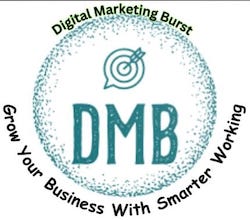The Secret to High-Conversion Emails: Analytics-Driven Marketing
In today’s digital marketing landscape, achieving high-conversion email campaigns requires more than just a catchy subject line and great content. Successful email marketing is built on data. With email marketing analytics driving insights, businesses can optimize their campaigns, ensuring every message resonates with the audience. In this blog, we will explore how using email campaign analytics tools, implementing the best email marketing strategies, and leveraging advanced email analytics tools can significantly improve your email marketing results. Understanding analytics for email campaigns is key to unlocking higher engagement and conversions.

The Power of Email Marketing Analytics
Understanding email marketing analytics is crucial for any marketer looking to improve email performance. By tracking key metrics such as open rates, click-through rates, and conversion rates, marketers gain insights into how their emails are performing. Using email campaign insights helps you understand the behavior of your audience, allowing for more personalized and targeted emails.
Regularly analyzing these metrics ensures that your campaigns are aligned with user expectations and helps you adjust your strategy in real-time for better results.
Essential Email Campaign Analytics Tools for Success
Using the right email campaign analytics tools is critical to optimizing email performance. These tools provide detailed data on user behavior, segmentation performance, and engagement trends. Platforms like Google Analytics or specialized email marketing analysis software offer real-time tracking of campaign metrics, helping marketers refine their strategies.
Advanced email campaign tracking tools also enable A/B testing, list segmentation, and behavioral triggers, all of which are vital to improving engagement and conversions.
Best Email Marketing Strategies for Conversions
Implementing the best email marketing strategies involves more than just sending out regular emails. It’s about crafting a thoughtful, data-driven approach that takes into account user behavior, preferences, and past interactions. These top email marketing strategies focus on segmentation, personalization, and optimizing send times.
By aligning your strategy with insights from your analytics tools, you can improve open rates, engagement, and, most importantly, conversions.
How Analytics for Email Campaigns Drive Results
Analytics for email provides actionable data that helps marketers identify what’s working and what isn’t. Metrics like bounce rates, unsubscribe rates, and engagement levels can highlight areas that need improvement.
By leveraging email campaign tracking tools, you can refine your content and adjust your strategies based on audience feedback. The goal is to continuously improve campaign effectiveness and ensure every email drives the desired action.
Advanced Email Analytics Tools for Personalization
Advanced email analytics tools allow for deeper insights and more refined targeting. These tools help track customer journeys, enabling marketers to create personalized email sequences that align with user behavior. By using email campaign optimization tools, you can segment your audience based on various factors such as purchase history, browsing behavior, and engagement level.
This level of personalization ensures that each recipient receives content tailored to their needs, improving the chances of conversion.
Conclusion: Unlock the Power of Analytics in Email Marketing
Using email marketing analytics is no longer optional—it’s essential for any business looking to maximize the ROI from their email campaigns. With the right email campaign analytics tools, best email marketing strategies, and advanced email analytics tools, businesses can craft campaigns that not only engage but convert. At Digital Marketing Burst, we help businesses harness the power of analytics for email campaigns to drive measurable results. Contact us today to learn how we can elevate your email marketing efforts.





